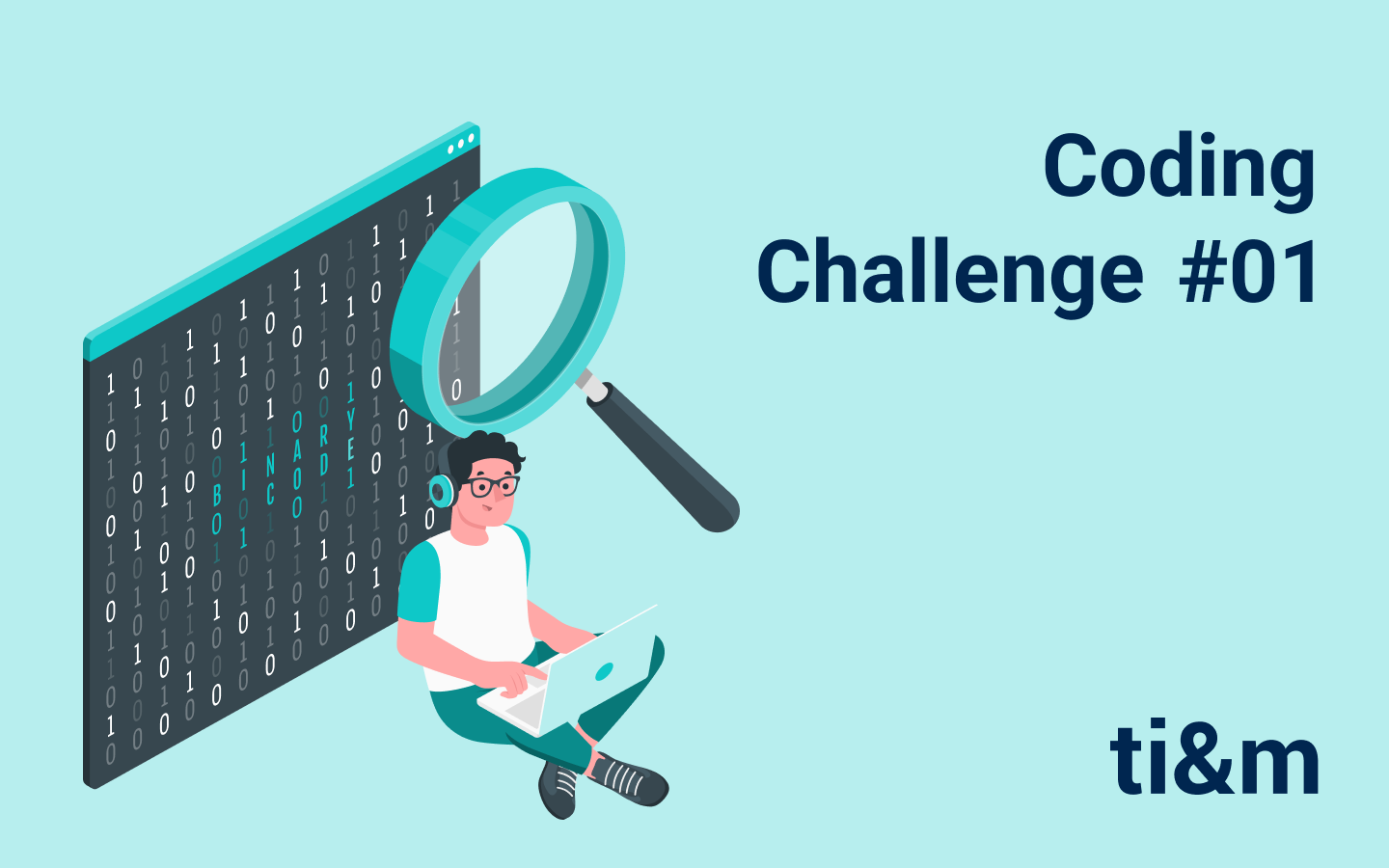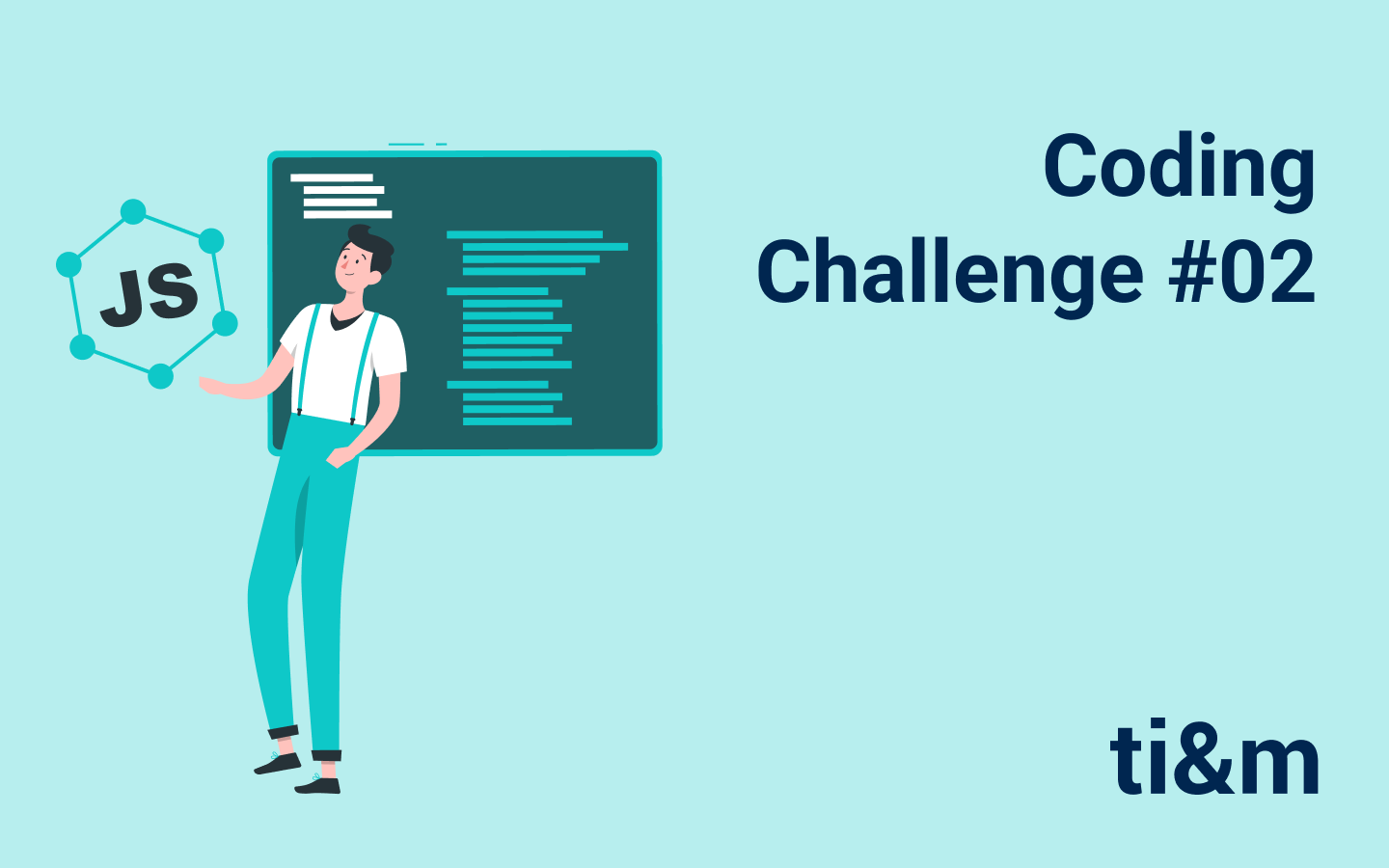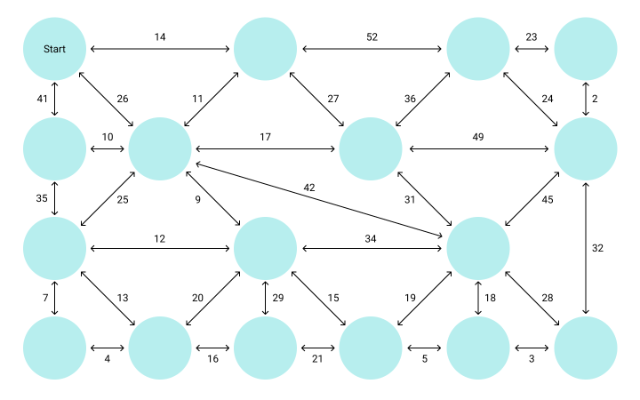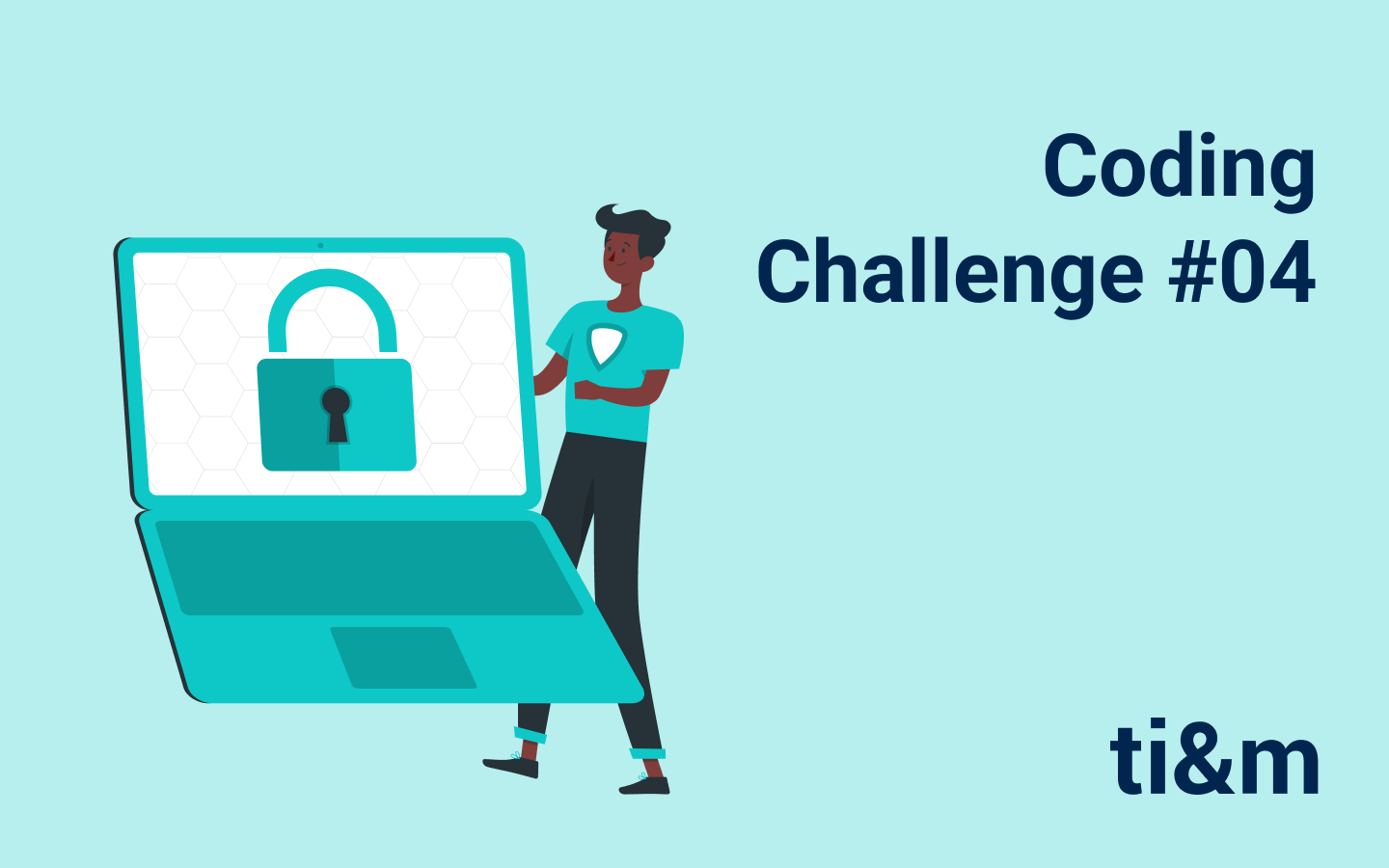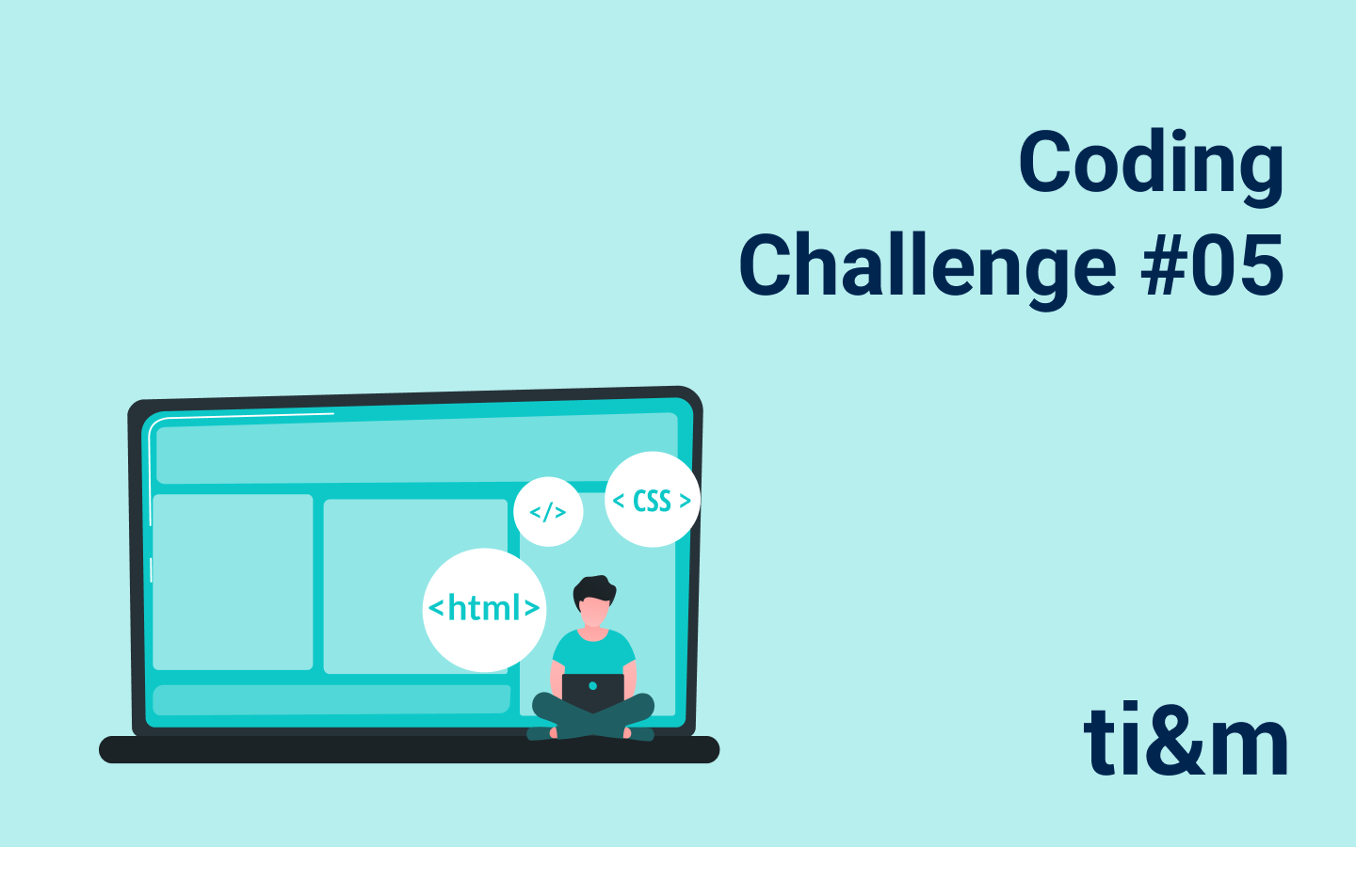We challenge you once a year!
The ti&m Coding Challenge for students was held from March 2024 to July 2024. Every month there was a new exciting task: from a number search to a graph challenge with Dijkstra to a CSS and HTML quest. Follow us on LinkedIn if you want to be informed when the Challenge 2025 goes live.
If you want to test your skills now for fun and find out if you have the right solutions, simply send your answers to marketing@ti8m.ch. We'll get right back to you. And who knows... Maybe there will be a give-away package for you if your answers are really good!
And this is how it worked:
The challenges were published at the beginning of the month and participants had until the end of the month to submit their solutions.
Discover the task
Release you skills
Submit you solution
Win great prizes
#1 Challenge: Number search
Here are your tasks!
01
Question 1
02
Question 2
03
Question 3
#2 Challenge: JavaScript quiz
#3 Challenge: Shortest path with Dijkstra
#4 Challenge: Security Challenge
#5 Challenge: CSS & HTML
This is how you submit your answers.
Want to know if you've done it right? Then simply send the answers to marketing@ti8m.ch and we'll get back to you.
If you've worked really hard, there might be a great giveaway package waiting for you!





